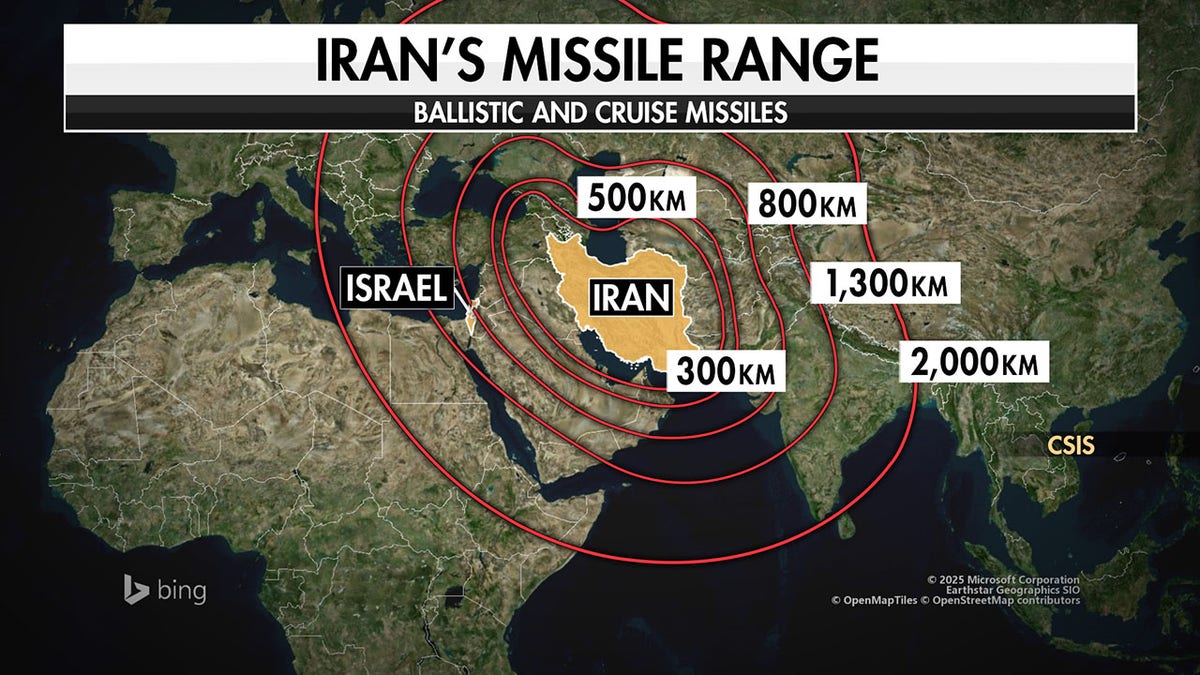NEWYou can now listen to Fox News articles!
Five months after Israel and the U.S.’s bombardment of Iran’s military and nuclear facilities, Iran claims it now has more missile capacity than even before the 12-Day War.
That buildup would have implications far beyond the Middle East: renewed Iranian production could threaten American forces stationed across the region and test Israel’s missile defense limits, potentially pulling Washington into another confrontation if Tehran resumes strikes or proxy attacks.
“Iran’s missile power today far surpasses that of the 12-Day War,” Iranian Foreign Minister Abbas Araghchi recently declared, touting what he described as the regime’s rapid recovery from the massive U.S. and Israeli bombardment that struck dozens of military and nuclear sites in June. “The enemy in the recent 12-day war failed to achieve all its objectives and was defeated,” he said.
His comments were echoed by Defense Minister Brig. Gen. Aziz Nasirzadeh, who claimed that Iran’s defense industry has not only rebounded but expanded. “Iran’s defense production has improved both in quantity and quality compared to before the 12-day Israeli-imposed war in June,” Nasirzadeh said Monday, insisting that new missiles are rolling off production lines faster than ever.
IRAN PRESIDENT ACCUSES US OF ‘GRAVE BETRAYAL’ WITH NUCLEAR STRIKES IN UNGA SPEECH

Missiles launched from Iran towards Israel are seen from Tubas, in the Israeli-occupied West Bank, June 14, 2025. (REUTERS/Raneen Sawafta)
The June conflict — later dubbed the 12-Day War — began when Israel launched a sustained bombing campaign on Iran’s nuclear and missile infrastructure. The United States joined the operation days later with a series of precision strikes on Iran’s nuclear facilities.
Behnam Ben Taleblu, a senior fellow at the Foundation for Defense of Democracies, told Fox News Digital that Iran’s renewed emphasis on missile production is no surprise given what it learned during the June conflict.
“There’s no doubt that after the 12-Day War, Tehran understands the missiles constitute the long pole in its ability to deter and punish attacks,” Taleblu said. “Expect Tehran to therefore concentrate on building back better when it comes to its missile program, which pre-war was already the largest in the region.”
He warned that Iran’s accelerating focus on missile development could be the spark for the next regional conflict. “It’s for this reason that the next likely conflict between Israel and Iran may well be brought about by missile concerns, not nuclear,” Taleblu said.
TRUMP’S IRAN GAMBLE PAYS OFF AS WWIII DOOMSAYERS NOW PRAISE ISRAEL-HAMAS CEASEFIRE

Firefighters and rescue personnel work at an impact site following missile attack from Iran on Israel, at Haifa, Israel, June 15, 2025. (REUTERS/Rami Shlush)
“Moving forward, I’d pay attention to the ‘missile math’ between Israel and Iran,” he added. “Much now depends on rates of production between Israeli interceptors and Iranian medium-range ballistic missiles.”
Brig. Gen. (res.) Yossi Kuperwasser, head of the Jerusalem Institute for Strategy and Security, said Tehran’s post-war threats reflect both internal pressure and an effort to regain leverage.
After the U.S. bombed Iran’s nuclear sites, Tehran said talks on a renewed nuclear deal were off. Washington has insisted Iran must give up all enrichment capacity, while Tehran claims it will continue enrichment for civil purposes.

A map shows what is within range of ballistic missiles fired from Iran. (Fox News)
Kuperwasser said Iran’s hardliners are using missile rhetoric to test international resolve. “They are attempting to pressure the international community to ease sanctions and diplomatic isolation by issuing threats of escalation,” he said. “To make these threats credible, and drawing lessons from the war in June, they are working intensively to replenish their arsenal of long-range missiles.”
Kuperwasser warned that while Iran’s nuclear ambitions remain, its focus on missile production shows the regime’s priority is deterrence. “Their threats should not be dismissed,” he said. “They must be taken seriously.”
Meanwhile, Tehran has already tested several satellite launch vehicles that use the same multi-stage propulsion and guidance systems needed for an intercontinental ballistic missile. Washington has repeatedly accused Iran of using its civilian space program as cover for developing technologies that could deliver nuclear payloads at intercontinental range.
CLICK HERE TO DOWNLOAD THE FOX NEWS APP
Israeli defense officials, in turn, have been racing to expand production of interceptors across the country’s multi-layered air-defense network. The Iron Dome, David’s Sling and Arrow systems were all pushed to their limits during the 12-Day War, when Iran launched hundreds of ballistic and cruise missiles toward Israeli cities and military installations.
Part of the Israeli response goes beyond replenishing interceptors. The country is now fielding one of the world’s first operational high-power laser air-defense systems. The Iron Beam system has completed acceptance testing and is being delivered to the Israel Air Force for operational deployment, Fox News Digital reported last month. The system is designed to intercept rockets, mortars, drones and other aerial threats “at a fraction of the cost of conventional interceptors.”
For Israel and the U.S., Iran’s latest boasts serve as a warning that the 12-Day War may not have settled much at all: both militaries are now racing to prepare for what they see as the next test of regional defenses, one measured in missile ranges and response times.
















